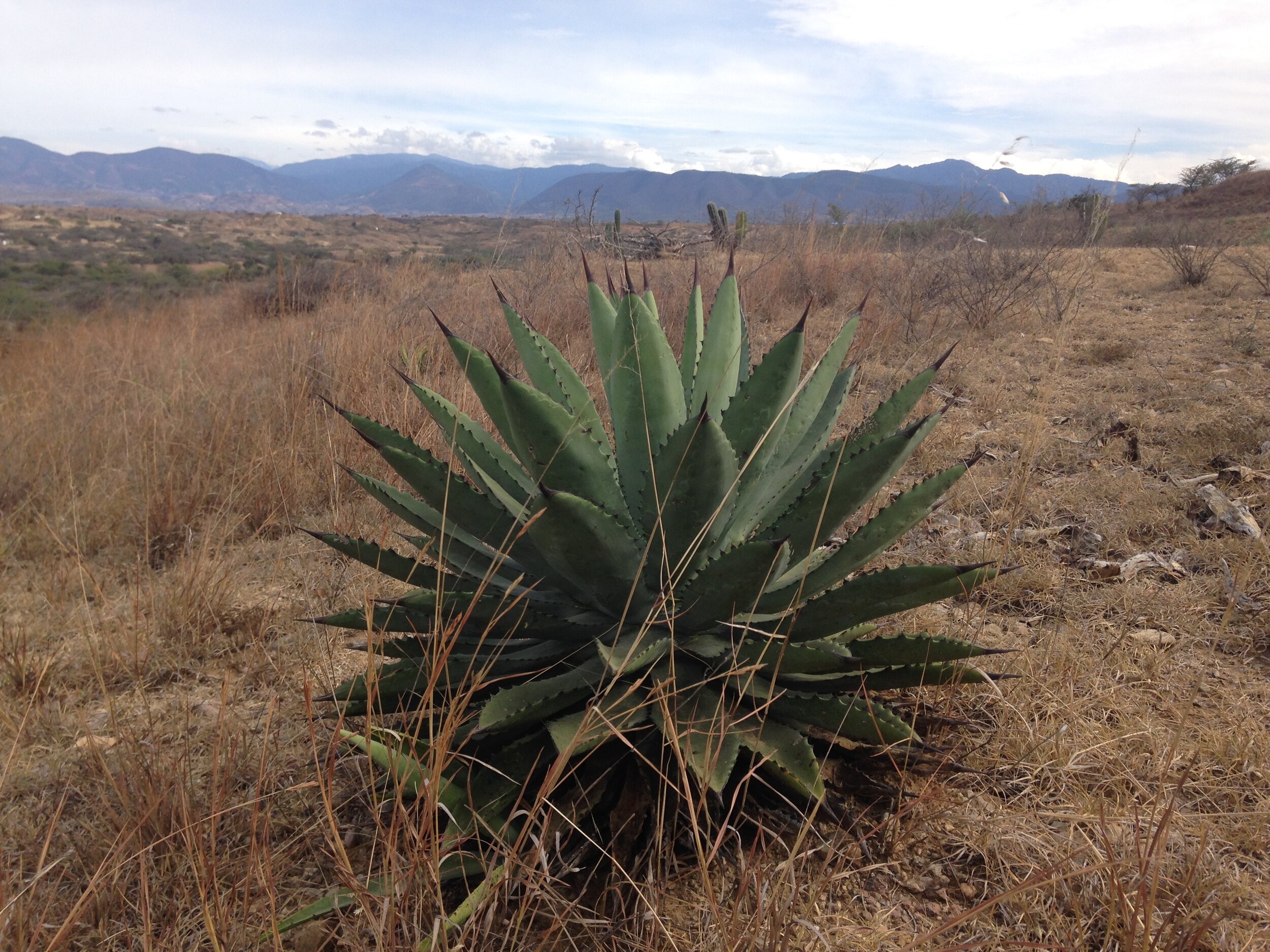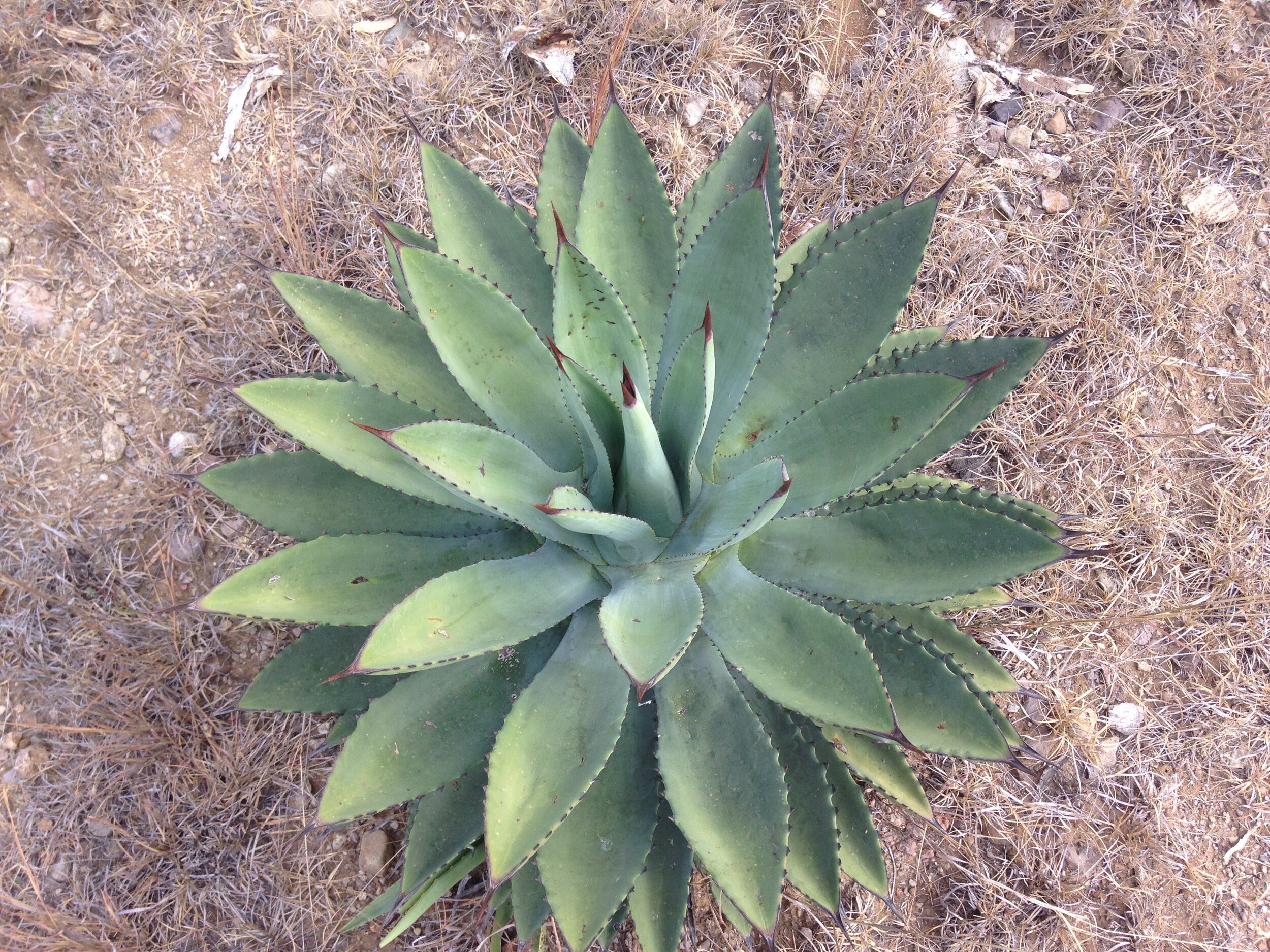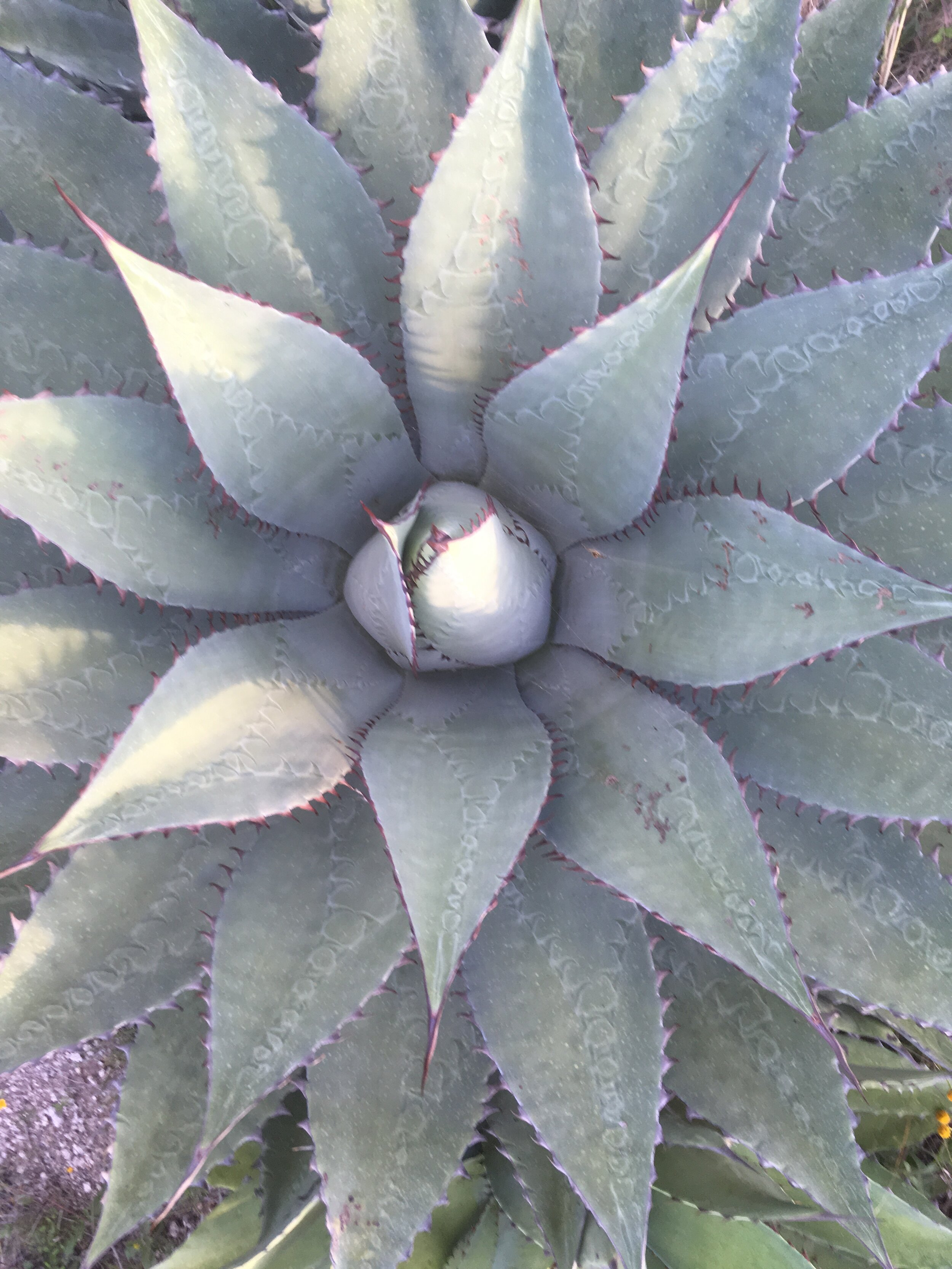Coyote (Agave lyobaa)
In Miahuatlán and much of the Central Valleys of Oaxaca the agave colloquially known as Coyote, or Coyota is revered for is beauty, scarcity and distinctively citrus-sweet, earthy aromas and flavors. This maguey is not to be confused with the Agave americana type from the Sola de Vega region that goes by the same name. The maguey featured in this photo was in recent years classified as Agave lyobaa, but those that work with the plant believe that it is in fact a hybrid between large- sized karwinskii types and the potatorum and seemanniana plants that are regionally known as Tobalá. As such, they are generally found in the wild, exclusively in the arid and rocky zones where these different species overlap in proximity, flowering times, and shared common pollinators. These wild Coyote are remarkably rare and take around 12 years to mature. For this reason, the plant and its distillate remain highly prized by producers and discerning drinkers alike. However, recent cultivation efforts by master magueyeros in Logoche have shown that these Coyote are abundant in the seed grows of their Madrecuixe cultivar, often comprising up to 50% of the grown out stock -thus the reason many prefer to reproduce their Madrecuixe plants through rhizome or bulbil cloning. Amongst these Coyotes, there exists great variance, with notable differences in length of its tallo (stem or stalk) the shape/size/color of both the penca (leaf), as well as the terminal and margin spines. Some grow significantly larger than others, but all maintain an egg-shaped piña and similar flavors. Cultivated, these plants mature in around 5 years, with the first experimental batches to be made later this year or in the spring of 2021. Worth of note, seeds gathered and grown from a Coyote mother-plant have yielded 100% Coyote types, but again with dozens of different morphological expressions. The choice by growers and producers to cultivate these special agaves is reflective of a desire to innovate, and maintain tradition by adapting practices that allow the preservation of culture and ecology.




